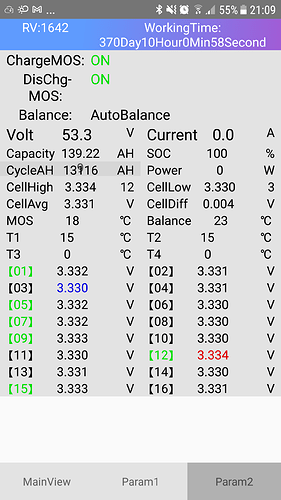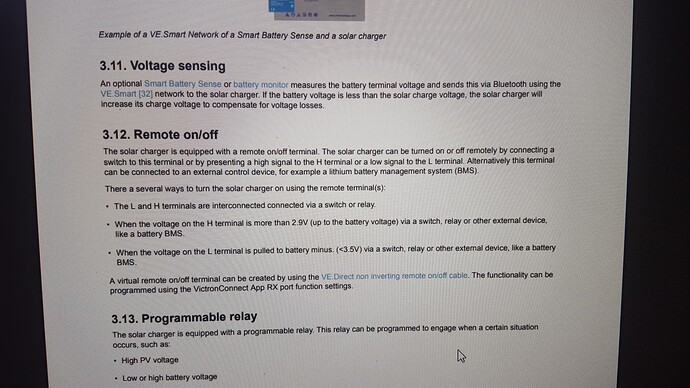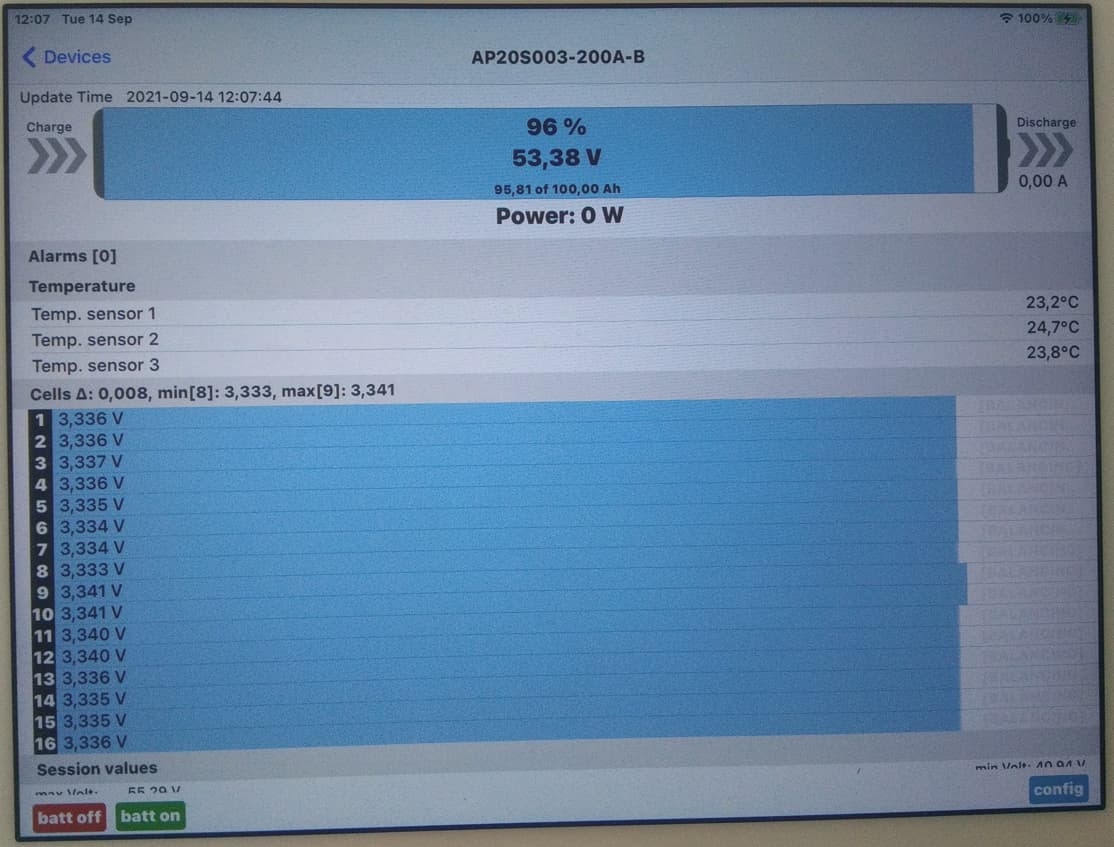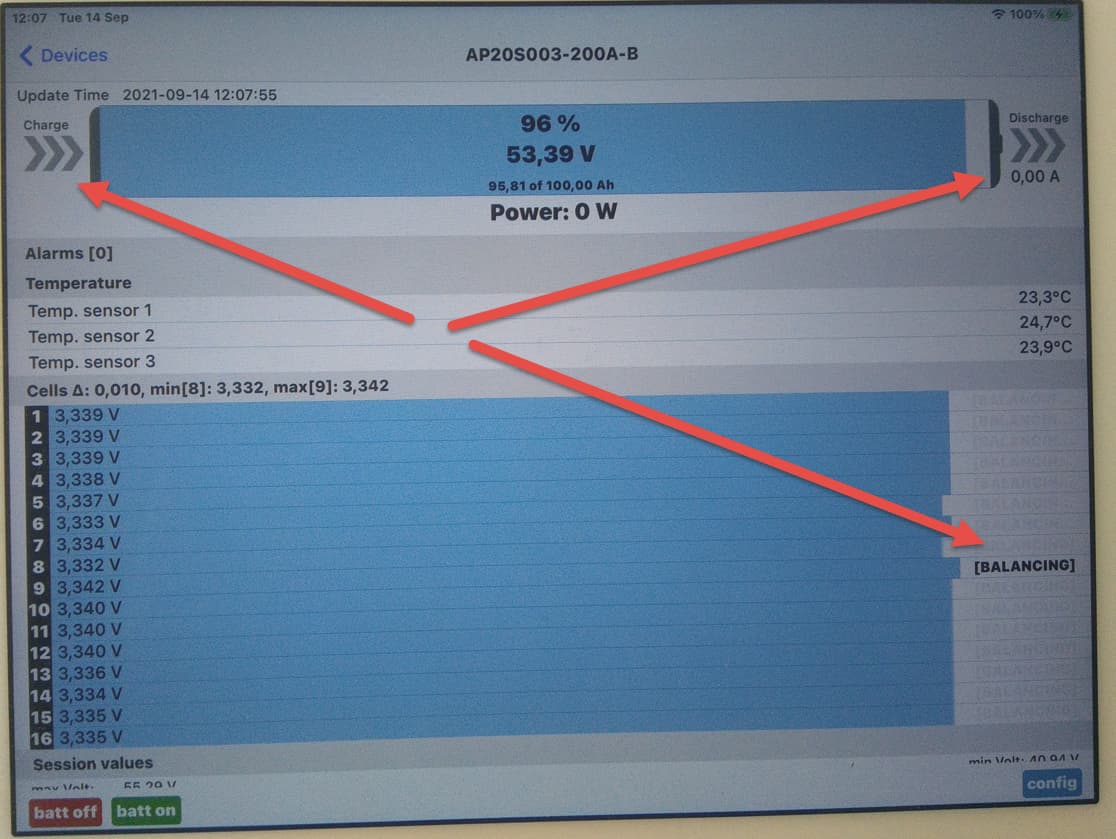Grid setpoint never worked. Some cells ran away as I tried that many times before, explained why not by @plonkster and @Louisvdw. I tried 0.1a … makes perfect sense re. the reason. Setting Grid Setpoint to zero safest bet. But still a rolling dice.
Therein the charge current with @Louisvdw driver in like ‘lets see what this does …?’ kinda move.
The possibilities now are there, it seems, if cells go outa whack, simply drop the charge current substantially, not the inverter max watts, which is not ideal at all. Tried that too.
Interesting to note, as long as the cells are >10mv, charge being 0 aka off, balancing still happens until <10mv.
Man, tonight, I am really chaffed!!!
Gonna work the systems a bit … see where the cells are excitable and simply add a couple more settings if needed, like slowing charge at 80 or 85% or whatnot.
This 3.65v fully charged … I have NO confidence a bank will stay like that for 1000’s of cycles. Help the BMS a bit by adjusting to ones usage patterns is my experiences so far. Check where the cells ‘excited’, make the charge amps adjustmentment.
3.45v is my new default balanced production bank max volts.
In other news:
The JBD, I was out, when I got back the relay clicked over and over, cells hitting 3.65v, over and over, The Bulb was needed.
Just one DC Ripple out of 30+ relay opening.
Still need a option for that … Maaaaandag.
Some more info:
On the 280ah cells, they all are min 290ah, I charge them to 290ah on the 12v @ 3.55v with ease … perfectly staying balanced right up to 100% SOC, then to 3.65v starting @ 2 amps to finish them off, on a parallel 16 cell bank.
Takes days.
Next batch @ 3.65v to 290ah 100% SOC in batches of 4 … EV-Peak to finish them off … once.
Then in production the 3.45v again.








